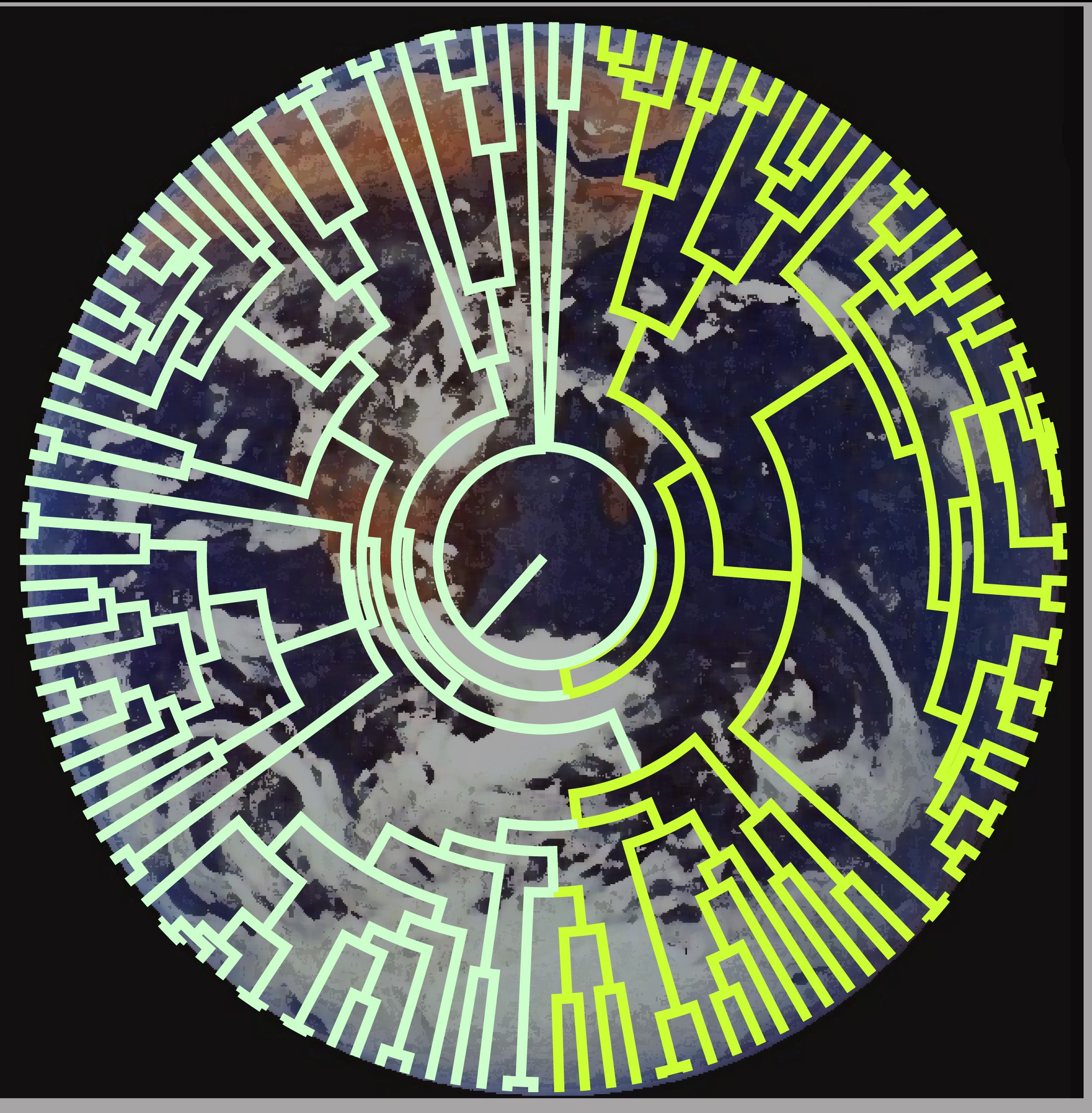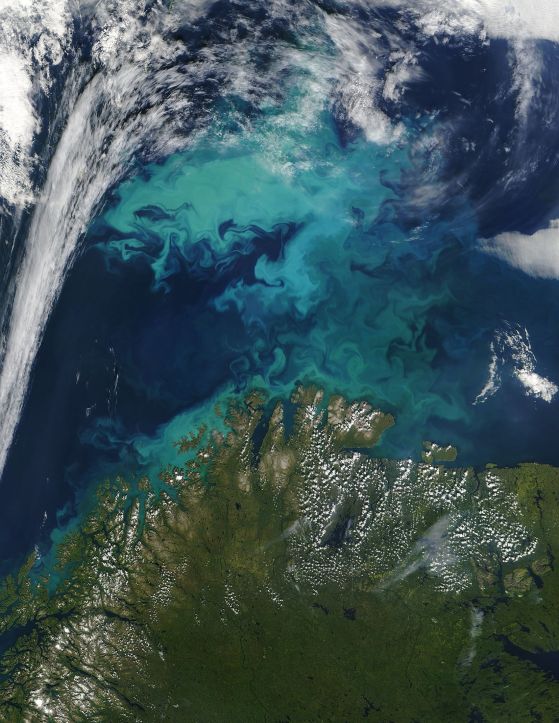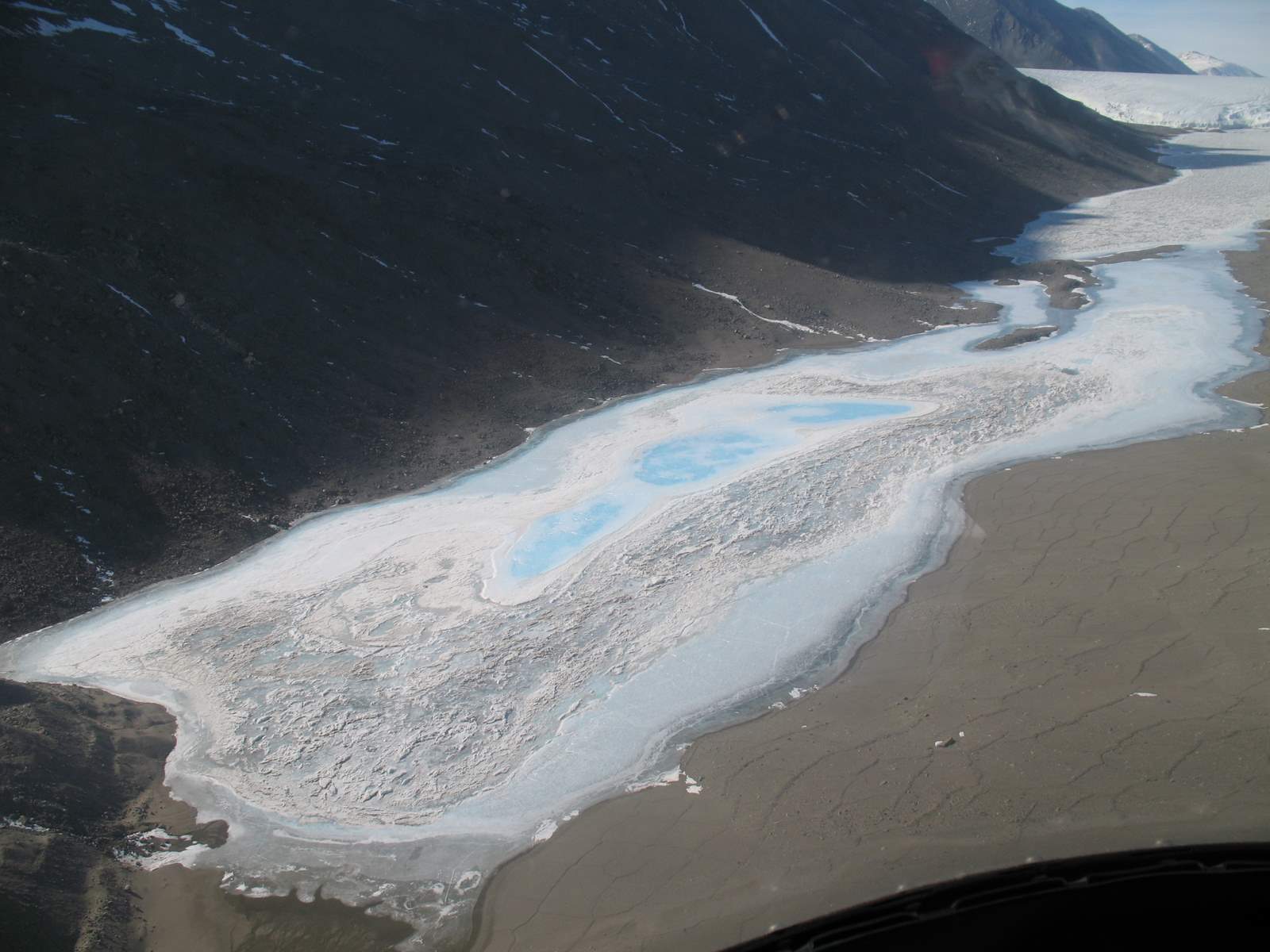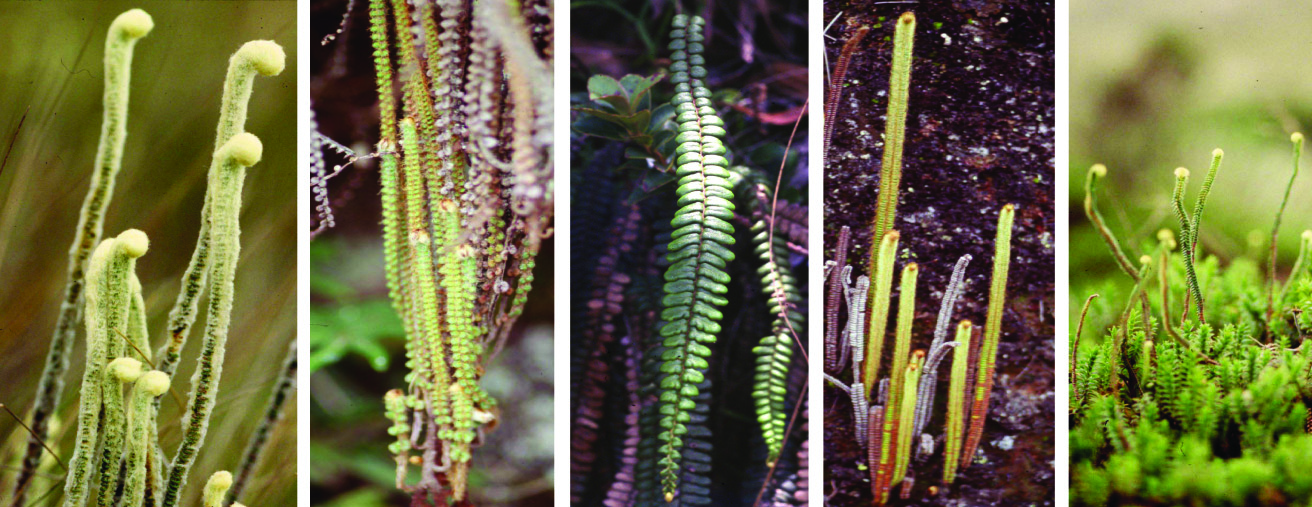
The Sánchez-Baracaldo lab covers a wide range of subjects including: Origin of photosynthesis, Cyanobacteria, life in extreme environments, geobiology, astrobiology, microbial genomics, phylogenomics, evolutionary biology, and climate change.
A central theme has been to understand how cyanobacteria (also known as blue-green algae) have contributed to global nutrient cycles (e.g., nitrogen, carbon, oxygen) through geological time. Cyanobacteria have played a fundamental role in the Earth’s history, enabling the rise of atmospheric oxygen and paving the way for animal evolution. The origination of cyanobacteria had a profound impact on global biogeochemical cycling and the climate of the early Earth. Phylogenomic analyses, character evolution and molecular clock analyses point to a freshwater origin of cyanobacteria around 2.7 billion years ago (Ga). Marine cyanobacteria evolved independently at different times in history. We are keen to understand how the evolution of cyanobacteria have contributed to making our planet increasingly habitable during the early Earth, and bridged between genomics and geochemistry.
Some people in my team are also working on environmental genomics including freshwater lakes and rivers, Greenland, Patagonia. Other projects have involved Antarctica, Somalia, Canada and the Atacama desert.
Below there is a description of some of the research topics previously carried out in the lab:
Evolution of marine and freshwater planktonic cyanobacteria

The first oxygenation event occurred at around 2.32 Ga, but it was only at the second oxygenation event, (800-600 million years ago = Ma) that the Earth’s oceans became fully oxygenated. Marine planktonic cyanobacteria first evolved around 800-500 Ma. Several factors contributed to the delay of the oxygenation of the Earth’s oceans. Firstly, cyanobacteria evolved in freshwater habitats and not in marine habitats as previously thought, and, second, marine productivity had a huge boost when cyanobacteria were finally able to colonise marine habitats (Sanchez-Baracaldo et al 2014; Sanchez-Baracaldo 2015, Boden et al 2021).

The colonisation of marine environments would have allowed cyanobacteria to fix carbon dioxide (CO2) at a massive scale. Their origin likely increased the export of organic carbon into the sea bed helping explain the sharp increase of oxygen levels that have been linked to the origin of animals. These events played a key role allowing for the evolution of animals and the beginning of our modern Earth System. The origin and diversification of marine planktonic cyanobacteria also appear to be linked to major disruptions to the Earth’s nutrient cycles such as some of the most extreme glaciations (e.g., Snowball Earth) .
We sequenced five strains of freshwater picocyanobacteria (Di Cesar et al 2018, and Sanchez-Baracaldo et al. 2019) and have looked into the evolution of phycoerythrin genes within the SynPro clade (mpeBA and cpeBA genes; Sanchez-Baracaldo et al 2019).
Cyanobacteria from the Cryosphere

Cyanobacteria are major primary producers in glacial ecosystems contributing to nitrogen fixation and organic carbon accumulation. We have isolated and sequenced cyanobacteria genomes from the Arctic and the Antarctica to carry out comparative analyses of key taxa (See our genomes studies – Chrismas et al. 2015; 2016; and 2018). By studying the evolution of cold-adapted cyanobacteria, we aim to understand how cyanobacteria have contributed to past/present nutrient cycles in polar environments during the Earth’s history. We have identified several clades of cyanobacteria that evolved from ancestors that were capable of copying with extreme cold environmental conditions.
Other work:
Life on the páramo: how ferns adapted to one of Earth’s newest and most extreme environments
Ferns are believed to be ‘old’ plant species. However, a group of Andean ferns evolved much more recently – their completely new form and structure (morphology) arose and diversified within the last 2 million years. This novel morphology seems to have been advantageous when colonising the extreme environment of the high Andes. This ecosystem, known as the páramo, was created relatively recently (around 3 to 5 million years ago), when the Andes underwent a major uplifting event. This provided new ecological opportunities for plants to exploit and to flourish in. Other plants from North America and temperate southern regions were also able to colonise these new páramo environments.

Higher altitudes near the equator experience extreme environmental fluctuations every twenty-four hours, with very cold nights and very hot days. In order to grow there, some plants have evolved new adaptions, in form and in leaf structure, which allow them to cope with the paramos’ freezing nights and high solar radiation at midday. Jamesonia, a group of páramo ferns evolved highly modified leaves, which retain the furled fronds of a young fern yet are sexually mature. Some páramo species were found to have over 300 pairs of leaflets per frond – this is in contrast to their closest relatives in the more sheltered habitat of the cloud forest, lower down the mountains, which have no more than 12 pairs of leaflets per frond. In addition, the length of these leaflets declines rapidly with the increase in altitude. The rate by which new biological species arise (speciation) is significantly higher among páramo than non-páramo ferns.
